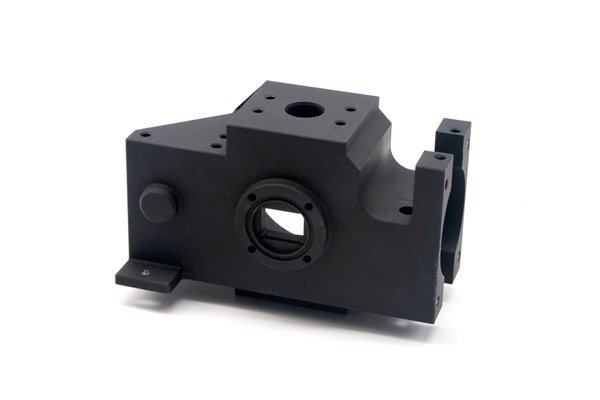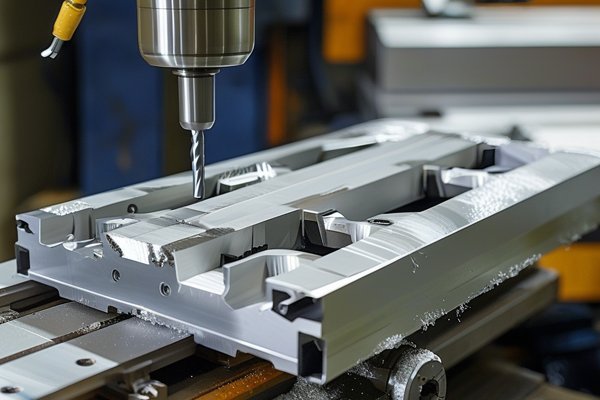Did you know that approximately 85% of hospitals use stainless steel for their surgical instruments? This staggering statistic highlights the critical importance of material hygiene standards in environments where sterility and durability are paramount. As the demand for high-quality machined parts increases across various industries, understanding the differences in hygiene standards, especially between materials like stainless steel and aluminum, has become essential for manufacturers, engineers, and quality assurance professionals.
This blog aims to deeply analyze the hygiene standards associated with CNC machining processes for stainless steel and aluminum alloy. We’ll explore the unique characteristics and benefits of each material, investigate their hygienic properties, and provide solutions for industries that strive for excellence in cleanliness and safety.
Understanding CNC Processing
Before delving into the specifics of hygiene standards, it’s important to grasp what CNC (Computer Numerical Control) processing entails. CNC machining is a manufacturing process that uses computerized controls to operate CNC machines. These machines can automatically create precise components and parts by removing material from a solid block (known as a blank) through various operations like milling, turning, and drilling.
The choice of material plays a crucial role in defining the product’s compliance with hygiene standards. Stainless steel and aluminum alloys are two of the most commonly utilized materials in CNC processing but diverge significantly regarding their hygienic characteristics.
Section 1: Hygienic Properties of Stainless Steel
1.1 Corrosion Resistance
Stainless steel is an alloy primarily of iron, chromium, and sometimes nickel, known for its excellent resistance to corrosion. The chromium content forms a thin layer of oxide on the steel surface, which protects against rust and other corrosive elements. This property is particularly vital in settings like food processing and medical environments, where exposure to moisture and various chemicals is common.
1.2 Non-Porous Surface
One of the standout features of stainless steel is its non-porous surface. Non-porous materials do not harbor bacteria or contaminants, making stainless steel an ideal choice for surgical instruments and food processing equipment. The smooth, sleek surface can be easily cleaned and sterilized, ensuring that any hazardous pathogens are effectively removed.
1.3 Compliance with Health Regulations
Many health and safety regulations, such as those stipulated by the FDA for food processing and ISO standards for medical devices, frequently favor stainless steel due to its hygienic properties. When dealing with materials that come into direct contact with food or human tissues, compliance with strict regulations becomes non-negotiable, providing a solid argument for the use of stainless steel in CNC applications.
1.4 Easy Cleaning and Maintenance
Stainless steel is easy to clean because it withstands repeated exposure to detergents and disinfectants without degrading. This ease of maintenance extends the lifespan of equipment and ensures that it remains contamination-free.
Section 2: Hygienic Properties of Aluminum Alloy
2.1 Susceptibility to Corrosion
Aluminum alloy, while being lightweight and versatile, is often susceptible to corrosion. Although aluminum naturally forms an oxide layer that provides some protection, it is not as comprehensive as the layer found in stainless steel. As a result, aluminum components can corrode when exposed to aggressive environments, such as wet or acidic conditions—factors commonly encountered in food processing industries.
2.2 Porosity and Surface Integrity
Aluminum isn’t inherently non-porous like stainless steel, which can be a potential issue in terms of hygiene. This porosity can allow the accumulation of bacteria or contaminants on the surface of aluminum components. However, manufacturers can apply various surface treatments, like anodizing, to enhance aluminum’s corrosion resistance and mitigate cleanliness concerns.
2.3 Environmental Regulations
Like stainless steel, aluminum alloys also face compliance with health and safety regulations, although the specific standards might differ based on the application’s nature. In sectors like construction or automotive, regulations are stringent regarding the safety and quality of components. However, industries that prioritize hygienic applications often opt for stainless steel due to its superior resistance to contamination.
2.4 Cleaning and Maintenance Challenges

Cleaning aluminum can be more challenging than stainless steel, as repeated exposure to aggressive cleaning agents may wear down the metal’s surface over time. Additionally, if an aluminum part becomes scratched, this could create spots where bacteria may grow, further complicating hygiene efforts.
Section 3: Comparative Evaluation of Hygiene Standards
3.1 Mechanisms for Bacterial Growth
Stainless steel’s smooth and non-porous surface minimizes the likelihood of bacteria adhering and growing. In contrast, the potential for porosity in aluminum can make hygiene management more complex.
3.2 Assessment by Industry Standards
The FDA and other health regulatory bodies establish rigorous testing protocols for material hygiene. Stainless steel generally outperforms aluminum in standardized testing for food-safe materials and equipment due to its low contamination risk and superior cleaning capabilities.
3.3 Cost Considerations
While the initial cost of stainless steel is often higher than that of aluminum, the long-term benefits concerning durability, ease of sanitization, and compliance can justify the investment. For manufacturing operations where hygiene cannot be compromised, such as in hospitals or food processing plants, stainless steel could prove to be the more economical choice in the long run.
Section 4: Solutions for Maintaining Hygiene in CNC Machining
4.1 Material Selection
Selecting the right material (stainless steel or aluminum) is paramount for industries that require strict adherence to hygiene standards. Factors like the intended application, environmental conditions, and cleanliness requirements should inform material decisions.
4.2 Proper Surface Treatments
For aluminum applications, implementing surface treatments like anodizing can enhance its surface integrity, making it more resistant to corrosion and easier to clean. Stainless steel can benefit from passivation treatments that further enhance its corrosion resistance and hygienic properties.
4.3 Routine Maintenance Protocols
Establishing a robust cleaning and maintenance routine is crucial for ensuring that CNC machined components adhere to hygiene standards. Using appropriate cleaning agents and techniques for both materials can significantly extend their lifespan and prevent contamination.
4.4 Employee Training
Proper employee training regarding hygiene practices can significantly reduce the risk of contamination during handling and processing. Ensuring that personnel are well-versed in sanitization techniques and protocols will establish a culture of cleanliness within the manufacturing environment.
4.5 Regular Compliance Reviews
Conducting routine evaluations to ensure compliance with regulatory standards can help prevent issues related to hygiene material failures. Staying informed about changes in regulations can help businesses adapt and maintain compliance effectively.
In a world where hygiene and safety are paramount, understanding the comparative standards of stainless steel and aluminum alloy in CNC processing is crucial for any manufacturer or industry player. Stainless steel stands out for its robust resistance to contamination, easy maintenance, and alignment with health regulations, making it the go-to choice for many applications, particularly in healthcare and food processing.
On the other hand, while aluminum alloys offer lightweight and versatile options, their susceptibility to corrosion and potential for porosity must be managed carefully through surface treatments and maintenance protocols.
Ultimately, knowing these crucial differences will empower organizations to make informed decisions, ensuring product safety and compliance. As we navigate through various manufacturing processes, it’s paramount to have a clear understanding of the hygiene standards associated with each material, fostering an environment where quality, safety, and excellence remain at the forefront. Remember, the choice of material in CNC processing can have significant operational impacts that influence health, safety, and profitability—consider it a vital element of your business strategy.



